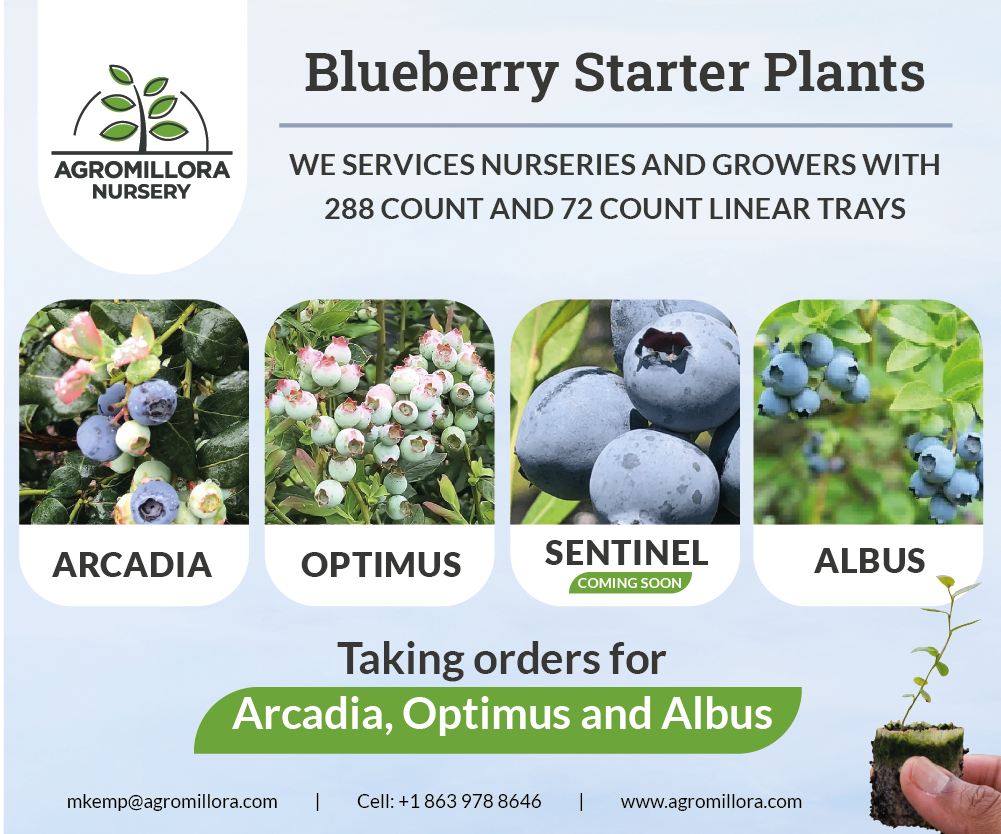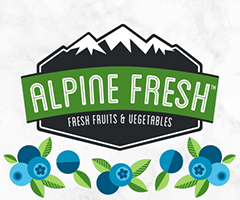Making Headway on Studies of Sparkleberry-Grafted Blueberry Plant Varieties
The following is an update of a long-term research project designed to evaluate the potential use of sparkleberry (Vaccinium arboreum) as a rootstock for southern highbush blueberry (SHB) in Florida.
Blueberries require low soil pH and high soil organic matter. Most Florida soils do not meet the requirements for blueberry production without significant inputs, such as pine bark (either solid beds or incorporated into the soil) and use of soil acidifying agents, such as sulfur and/or acid-treated irrigation water. Pine bark can add $4,500/acre to establishment costs of a crop, and additional pine bark applications will be needed during the life of the planting. In addition to these specific soil requirements, blueberry plants tend to be shallow rooted with the majority of the root system typically in the top six to 10 inches of soil. Shallow roots and the sandy soils typical of Florida blueberry fields complicate decisions on irrigation and fertilization. It is widely believed that shallow root systems combined with soils of low water holding capacity increases potential for plant stress, which predisposes blueberry plants to various diseases such as stem blight. A deeper, more vigorous root system might reduce these stresses and improve overall plant health.
WHY SPARKLEBERRY? Sparkleberry is a Vaccinium species that is native to the southeastern U.S., is graft compatible with blueberry, and has greater tolerance to a broader range of soil conditions than SHB including higher soil pH and lower soil organic matter content. Moreover, the sparkleberry root system is deeper and more spreading than the blueberry root system. Usually described as a small tree, sparkleberry tends to have a single trunk, which would lend itself to machine harvesting with the blueberry harvesters currently available.
In 2011, experimental plantings were established at the Plant Science Research and Education Unit (PSREU) in Citra, Florida, and at Straughn Farms in Archer, Florida. Both sites have well-drained, sandy soil. e plant material consisted of ‘Meadowlark’ and ‘Farthing’ SHB grown on their own roots or gra ed onto sparkleberry rootstock plants. Pine bark amended soil and non-amended soil were used to evaluate performance of grafted and own-rooted plants on both soil types.
RESULTS THUS FAR AND CONTINUED RESEARCH In general, grafting SHB on sparkleberry rootstocks resulted in a temporary reduction in plant growth and yield for the first two years after grafting. After the lag phase, graffted plants were larger than own-rooted plants when grown on non-amended soil, and similar to or larger than own-rooted plants when grown on pine bark amended soil. Fruit yield followed a similar trend with grafted plants having reduced yields initially, but by years four and five, yields tended to be higher than own-rooted plants on non-amended soils and similar to or higher than own-rooted plants in amended soil. Average berry weight tended to be greater for grafted plants than for own- rooted plants for ‘Meadowlark’, but not for ‘Farthing’. An interesting observation was made at the PSREU site in 2015. Own- rooted ‘Meadowlark’ plants began showing symptoms of bacterial leaf scorch caused by Xylella fastidiosa. However, grafted ‘Meadowlark’ plants did not show symptoms of disease development. Tests indicated that infection rates between grafted and own- rooted plants were similar but symptom development was greatly reduced for grafted plants. By the end of 2016, a small number of grafted ‘Meadowlark’ plants were showing early symptom development. Research is underway to better understand the basis for the increased tolerance of grafted plants to bacterial leaf scorch and determine if the tolerance will hold up over time.
Research is continuing to determine longer-term effects of using sparkleberry as a rootstock for SHB with respect to yield and longevity of the plantings. Preliminary work has also begun on evaluating sparkleberry selections for their useful traits and on the feasibility of grafting additional SHB cultivars onto sparkleberry. Additional years of research will be necessary before any recommendations on the use of sparkleberry as a rootstock for SHB can be made.
Credit:





